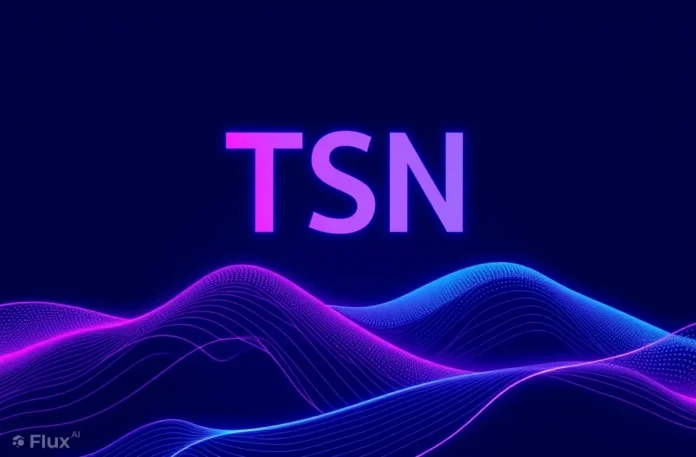Today, a few large companies control the flow of information and data on the internet. These centralized platforms, which we use daily for communication, hold immense power. They can censor or restrict content, which limits privacy, freedom of speech, and access to information. Web3 offers an important alternative, with decentralization at its core.
Web3 decentralizes control by using blockchain technology. Decentralized applications (dApps) and digital identities (DIDs) empower users. They give individuals control over their own data and reduce the influence of centralized authorities. As a result, Web3 makes censorship harder and helps protect privacy and freedom online.
The Problems with Web 2.0’s Centralization
Web 2.0, the current version of the internet, offers many benefits. Social media, content sharing, and cloud services are just a few examples. However, these advancements have concentrated power in a few hands. Companies like Facebook, Google, and Amazon control vast amounts of user data. They also decide what content gets shared and what gets removed.
This control creates vulnerabilities. Governments can pressure platforms to remove content, and the companies may comply. Sometimes, this censorship proves necessary, such as when removing illegal content. But it also limits free speech or silences legitimate voices. Additionally, algorithms control what content users see, often without users understanding how these decisions are made.
Centralized platforms also pose privacy risks. They collect and store large amounts of personal data, which advertisers exploit or malicious actors steal. Users have little control over how their data is stored or used, leading to distrust in the current system.
Web3: Shifting Power Back to the Users
Web3, based on blockchain technology, offers a decentralized alternative to Web 2.0. It shifts control away from centralized companies and puts it in the hands of users. In Web3, data spreads across a network of nodes rather than on centralized servers. This decentralization makes it much harder for any one entity to censor or manipulate content.
Decentralized Applications (dApps)
One of the key innovations of Web3 is decentralized applications (dApps). Unlike traditional apps that rely on centralized servers, dApps operate on a blockchain. This structure ensures no single entity controls the application, which makes it more resistant to censorship.
For example, a decentralized social media platform would function differently from Facebook or Twitter. In the decentralized version, no company or administrator can delete posts or ban users. Instead, content distributes across many nodes. If one node removes a post, the other nodes retain it. This setup makes it much harder for any single entity to censor information or silence users.
Because dApps run on blockchain, they remain transparent. Smart contracts, which are self-executing agreements written in code, govern how dApps function. Once a smart contract is deployed, it operates independently. No one can alter the terms or remove content without all parties agreeing. This guarantees that users can trust the application to behave as expected.
Digital Identities (DIDs)
Another important aspect of Web3 is the concept of digital identities (DIDs). In Web 2.0, users often need to share personal information to access services. This information goes into centralized databases, making it vulnerable to breaches and theft.
DIDs give users more control over their identities. Rather than relying on a third party to store personal information, users create self-sovereign identities on the blockchain. They can then use these identities to access services without sharing unnecessary personal data. This approach reduces the risk of data breaches and makes it harder for companies or governments to track users.
DIDs also enhance privacy. Users decide what information to share and with whom. This method protects sensitive data while allowing users to prove their identity when needed. In a world where privacy is increasingly at risk, DIDs offer a way to regain control.
Smart Contracts and Censorship Resistance
Smart contracts play a key role in making Web3 resistant to censorship. These self-executing programs automatically enforce agreements once specific conditions are met. In Web3, smart contracts govern how decentralized applications work, ensuring that the rules remain unaltered.
For example, in a decentralized content-sharing platform, a smart contract ensures fair publishing and distribution. Once the contract goes live, it operates according to the predefined rules. No entity can censor content or alter the platform’s behavior without the consent of all involved parties.
This feature makes it much harder for any authority to impose censorship. Since smart contracts are tamper-proof, they ensure that decentralized applications follow transparent and consistent rules. This enhances trust and makes Web3 platforms more reliable.
Overcoming Challenges
Web3 offers significant potential, but it faces some challenges. One major hurdle is scalability. Blockchain networks run slower and use more resources than centralized servers. Developers are working on solutions, like Layer 2 protocols, to improve speed and usability.
Another challenge is user adoption. Many people remain unfamiliar with Web3, dApps, and DIDs. For Web3 to succeed, developers must create user-friendly applications. These platforms must be as convenient as their centralized counterparts for mainstream users to adopt them.
Finally, Web3 will need to address regulatory concerns. Governments and institutions may resist decentralization, fearing a loss of control. Finding ways to balance decentralization with accountability will be essential for Web3’s long-term success.
The Future of Web3 and Online Freedom
As the internet evolves, Web3 offers a vision of a more decentralized, user-focused online world. Its decentralized applications, digital identities, and smart contracts shift control back to individuals. This creates an online environment where users own their data, and censorship becomes more difficult to impose.
Web3’s censorship resistance could profoundly impact the future of the internet. By decentralizing control, Web3 creates a more open, transparent, and private online experience. Governments and corporations will find it harder to control or limit access to information, empowering users and protecting their privacy.
While Web3 remains in its early stages, its potential to reshape the internet is clear. As technology improves and user adoption grows, Web3 may offer the freedom, privacy, and control that many users are seeking. By making censorship harder and giving users ownership of their data, Web3 represents an exciting and transformative step forward for the digital world.



